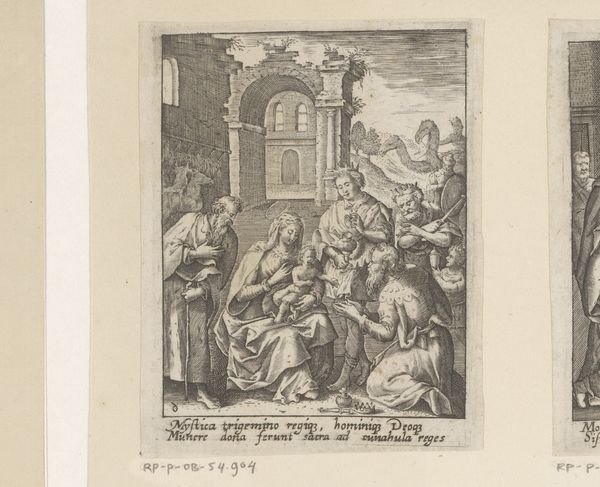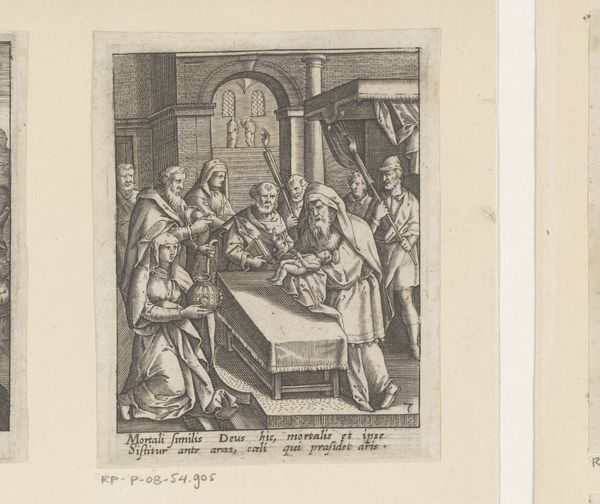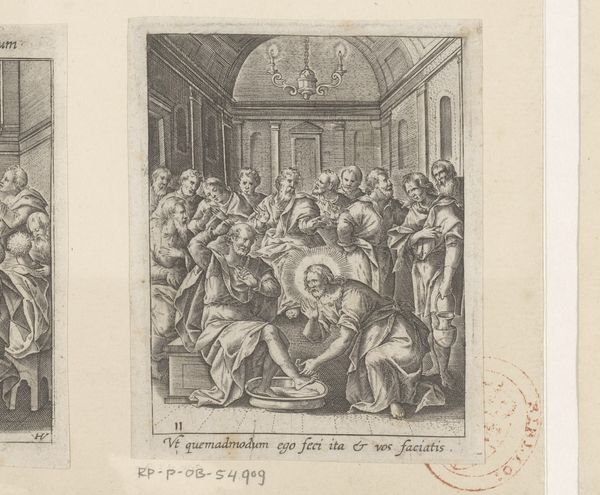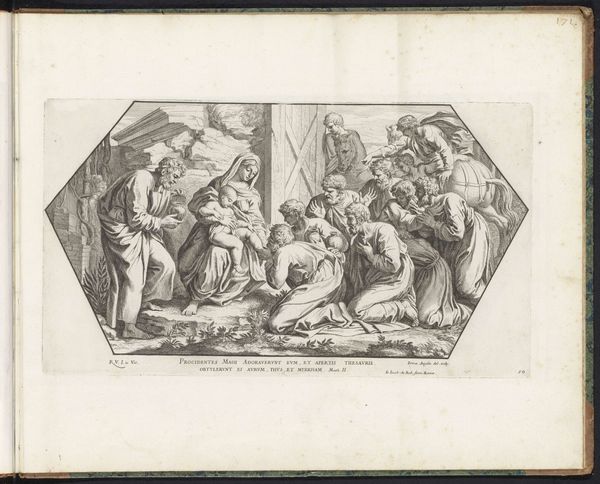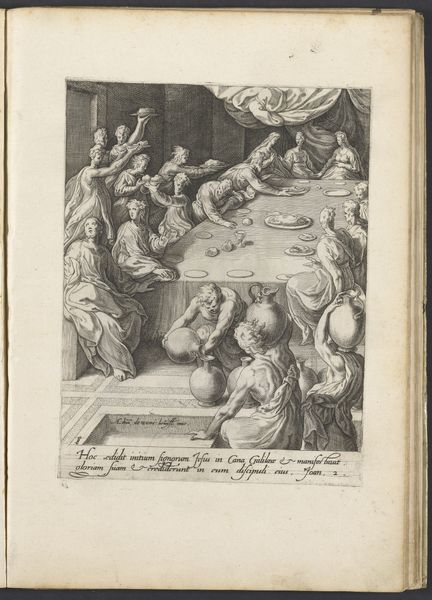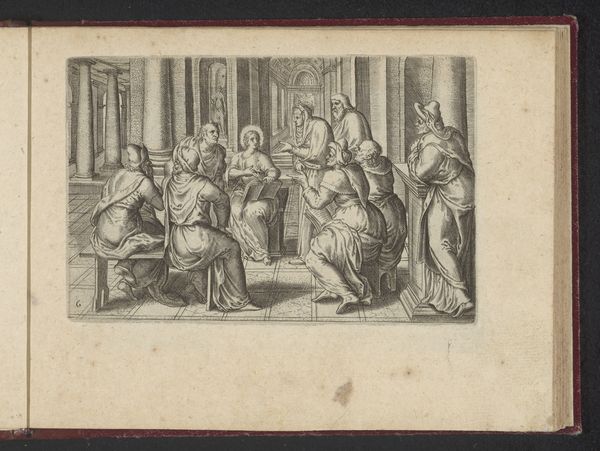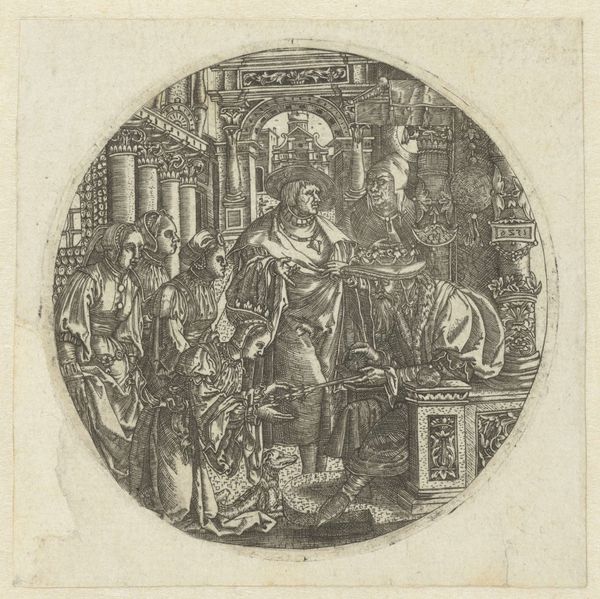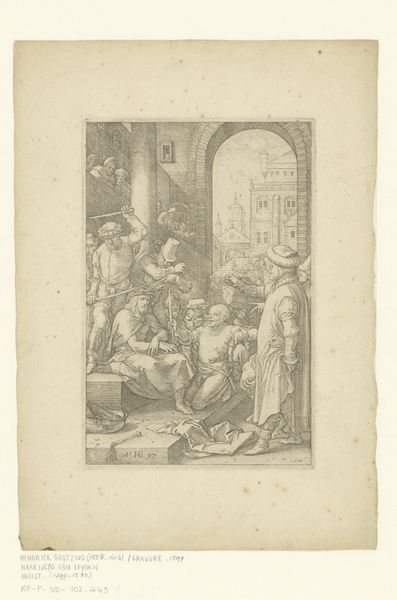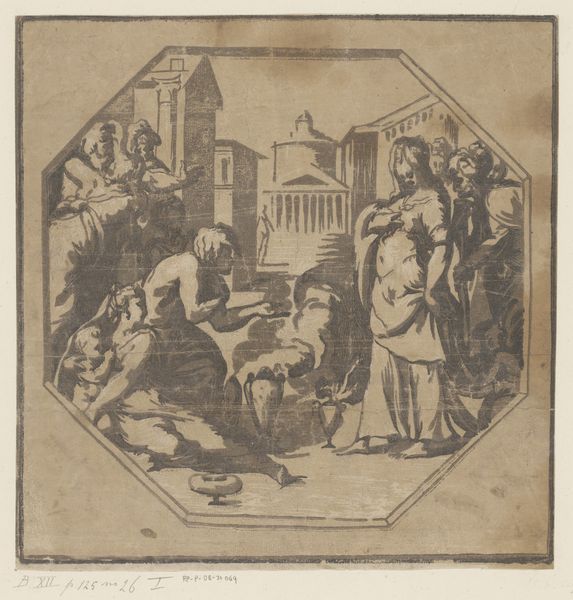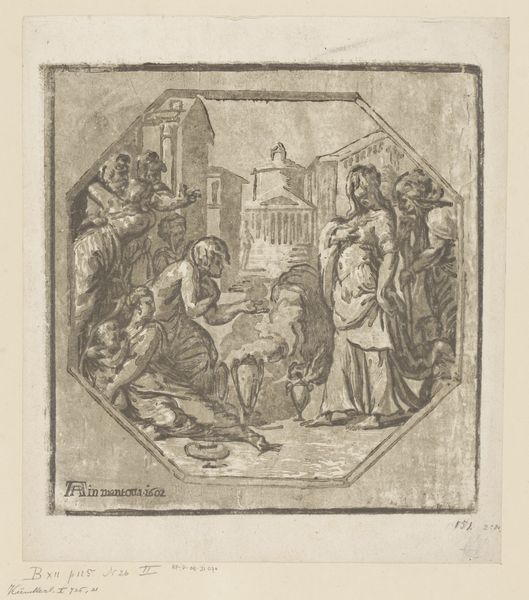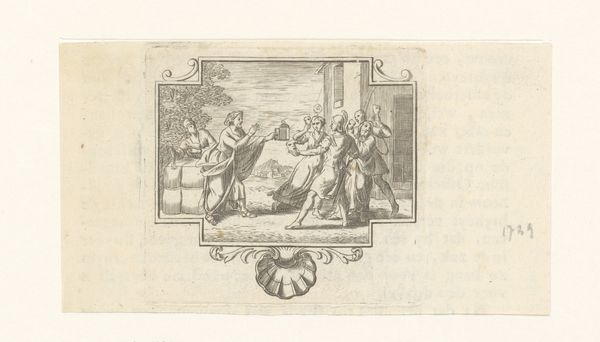
print, engraving
#
baroque
# print
#
figuration
#
history-painting
#
engraving
Dimensions: height 88 mm, width 71 mm
Copyright: Rijks Museum: Open Domain
Curator: This print, found here at the Rijksmuseum, captures “The Circumcision of Christ.” Though attributed to Heinrich Ulrich, its creation spans quite a period, from 1582 to 1671. It's an engraving—quite intricate, isn’t it? Editor: Intricate is an understatement. There's so much contained within those delicate lines. A rather formal depiction, yet with a subtle undercurrent of... something. Foreboding, perhaps? Is it the expressions, or the sheer number of figures crammed into a rather tight scene? Curator: Interesting observation. The composition is Baroque, and certainly full – an artistic choice reflecting the grandeur and drama characteristic of the style. What looks cramped to you might also feel rich and dynamic, if you know what I mean. There is a sense of history being depicted, of momentous event, framed and focused on by the crowd. Editor: But doesn’t the act itself…the circumcision… lend itself to tension? Even anxiety? Look at the child's face, that tiny wince... and how that links back to the architecture of this image: columns, archways, everything reinforces a feeling of being enclosed, pressed-in, yes? Is it the expectation or the fear, built in that drives the narrative? And think too that this is public, monumentalized! Curator: I take your point. Religious imagery then, as now, was political. In an era of religious conflict and reformation, images such as these helped reinforce the doctrines and practices of the Church, creating a clear image that normalizes religious practice within everyday experience and thereby strengthens cultural impact. And the location, specifically within a Temple context speaks to broader implications here. Editor: Exactly. Art isn’t made in a vacuum, especially something as deliberate as this. It’s a snapshot of its time, the institution behind it and for what audience it speaks. Which just underscores how we can never view these pieces simply as artworks. Curator: A point well made. Ultimately, works like this are time capsules, prompting reflection on both faith, power, and the human experience across centuries. Editor: Leaving us to wrestle with what remains...and perhaps, just as crucially, what was deliberately left unsaid.
Comments
No comments
Be the first to comment and join the conversation on the ultimate creative platform.
